Member Spotlight: Anubha Sood
December 2, 2020
This month’s Member Spotlight is Anubha Sood. Sood’s practice is centered around the sustainable ecology of making that provokes a sentiment addressing our current systems of production and their entanglement with the natural world.
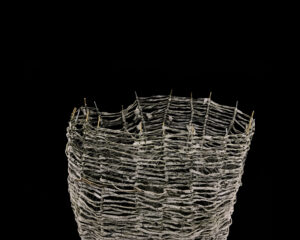
Anubha Sood Woven basket with fresh seaweed 2019, fresh seaweed, wire. Photo by the artist.
My work emerges out of an urgency to engage the body in the act of making. It’s like plucking grass when you are sitting in a park and you don’t know what to do with your hands. You do what feels intuitive, for me, it’s weaving. Making cloth is a healing process and a catalyst for my body to respond to its environment. My practice is centered around the sustainable ecology of making that provokes a sentiment addressing our current systems of production and their entanglement with the natural world. How can we depart from the general sequence of design that is so strongly tied to functionality and manufacturing processes? For me, it is crucial to intervene in this way of designing. Let the material guide various steps of the process. I have started trusting my intuition and the material I am working with to arrive at something. Intensive experimentation is integral to my making, as are accidents. I rely on them, on this random moment of language and communication that is part you and part the material you are working with.
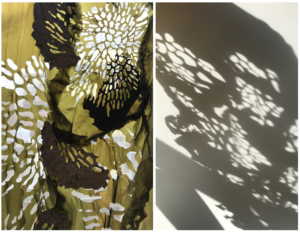
Anubha Sood Laser cut kelp 2019, kelp, laser cut. Photo by the artist.
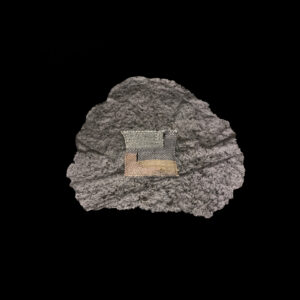
Anubha Sood Warps on Paper (series 1 of 5) 2019, handmade seaweed paper, soybean yarn, natural dyed with seaweed, 24″ x 14″. Photo by the artist.
Between Salt & Water:
Between Salt and Water focuses on the study of seagrasses and ocean water collected from three oceans and studied through dyeing, weaving, and material softening processes. The focus of this collection of experiments is to observe how the material configures itself to reveal new kinds of information in this case the relationship between our production processes and the natural world. The textile I’ve created uses fresh seaweed woven into a sculptural form that crystallizes over time in response to its immediate environment that alters its structure and texture. I let the material in both its raw and processed state to inform my making – dyeing matter left in the dye bath is used to create paper, softened kelp is used to create yarn, the leftover kelp is used to create lace. The varied processes I employ are cyclical in making and in their return to the earth.
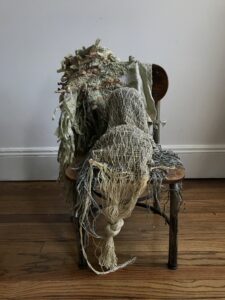
Anubha Sood Kelp Woven Structure (series 2 of 3) 2020, fresh seaweed, recycled sari, linen, silk, natural dyed with black moss seaweed and red kelp, 126″ x 18″. Photo by the artist.
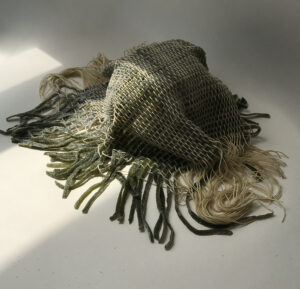
Anubha Sood Kelp Woven Structure (series 3 of 3) 2020, fresh seaweed, linen, 12″ x 9″. Photo by the artist.
-Anubha Sood
MFA Textiles, Parsons School of Design, New York
anubhasood.tumblr.com | @anubha_sood

1 Comment
Michelle Desveaux says
December 2, 2020 at 8:39 am
Addressing the connection between both the materials we use and our means of production with a deep concern for the environment is an important issue for artists to consider. Thanks for sharing.
Related Blog Articles
Anubha Sood
Member Spotlights: 2020